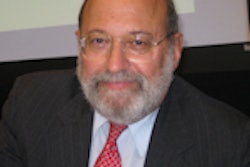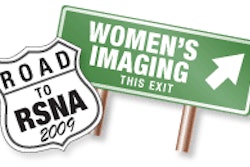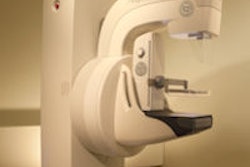The majority of radiology residents still do not want to interpret mammograms in their future practices, according to a study presented at last week's RSNA annual meeting in Chicago.
Researchers at the University of California, Los Angeles used an Internet survey to assess the available training and attitudes of senior residents regarding breast imaging. Surprisingly, the team also found that although residency programs have increased the time devoted to breast imaging, current residents report less opportunity to perform some breast imaging studies and procedures.
The survey was given to chief or senior residents at 201 radiology programs in North America and included topics such as:
- The organization of breast imaging rotations
- Residents' responsibilities during rotations
- Clinical practice protocols of the institutions
- Residents' impressions of breast imaging
- Residents' interest in pursuing breast imaging after residency
The lead author of the study was Dr. Lawrence Bassett, and the research team compared results from the survey to those from a survey conducted eight years ago.
Of the 201 training programs, 200 (99.5%) had dedicated breast imaging rotations. Of those 200 programs, 190 (95%) totaled 12 weeks or longer and 39 (19%) totaled 16 weeks or longer. Residents dictated mammography reports in 183 (91%) of the programs.
Breast imaging program duties included:
- Real-time ultrasound (139 programs, 69%)
- Cyst aspiration (150 programs, 75%)
- Needle localization (159 programs, 79%)
- Ultrasound guided biopsy (154 programs, 77%)
- Stereotactically guided biopsy (145 programs, 72%)
But breast imagers frequently report that the discipline is more stressful than other radiological duties, and survey participants in this study were no different: 81% said that mammogram interpretation was more challenging than interpreting other imaging studies. And 71% said mammograms should be interpreted by breast imaging subspecialists.
More than half of the residents who participated in the study said they would not consider a breast imaging fellowship (52%), and about the same number said they would not want to spend more than 25% of their practice time interpreting mammograms.
The results from Bassett's group confirm other recent findings. In a study published this year in the Journal of the American College of Radiology, Dr. Geoffrey Smith of Casper Medical Imaging in Casper, WY, and colleagues found that breast and women's imaging was the preferred subspecialty for only 11.8% of radiology residents and fellows (JACR, March 2009, Volume 6:3, pp. 147-159).
Why the resistance? Common reasons for the residents' wariness of breast imaging included lack of interest in the field, a fear of lawsuits, and the stressful nature of breast imaging, Bassett said. He suggested that these systemic problems need to be addressed to change the tide.
"An accurate picture of current breast imaging curricula and variations among residency programs is necessary to identify and correct systemic problems to improve the training of future breast imagers," he said.
By Kate Madden Yee
AuntMinnie.com staff writer
December 15, 2009
Related Reading
Radiology residents score lower using structured reports, September 14, 2009
Survey shows residents have ample job options, September 26, 2008
Survey: Radiologists 50 and older eager for work changes, November 19, 2007
Radiologists still high on recruiters' wish lists, August 14, 2007
Mammography pays well despite reputation, SalaryScan survey says, May 10, 2007
Copyright © 2009 AuntMinnie.com



















